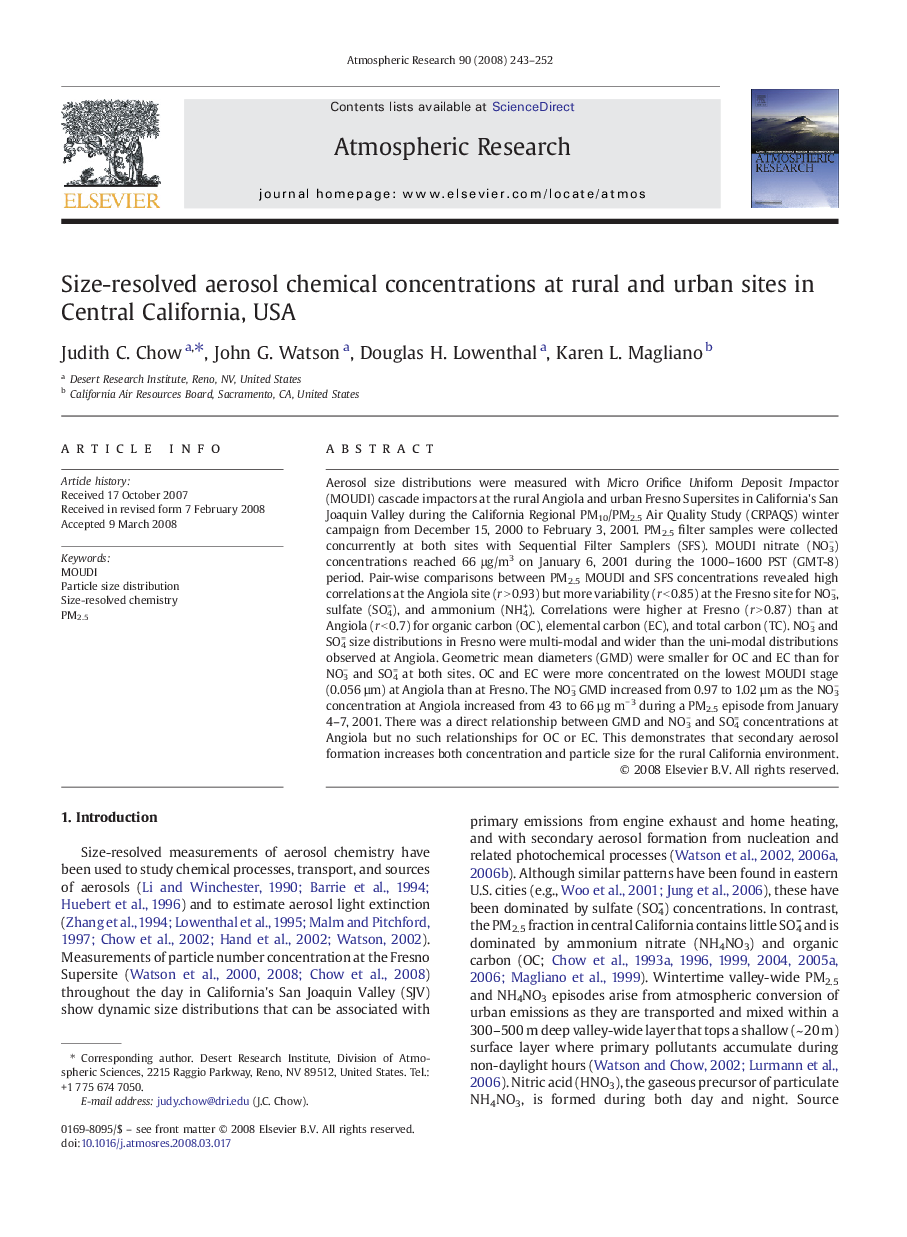| Article ID | Journal | Published Year | Pages | File Type |
|---|---|---|---|---|
| 4451095 | Atmospheric Research | 2008 | 10 Pages |
Aerosol size distributions were measured with Micro Orifice Uniform Deposit Impactor (MOUDI) cascade impactors at the rural Angiola and urban Fresno Supersites in California's San Joaquin Valley during the California Regional PM10/PM2.5 Air Quality Study (CRPAQS) winter campaign from December 15, 2000 to February 3, 2001. PM2.5 filter samples were collected concurrently at both sites with Sequential Filter Samplers (SFS). MOUDI nitrate (NO3−) concentrations reached 66 μg/m3 on January 6, 2001 during the 1000–1600 PST (GMT-8) period. Pair-wise comparisons between PM2.5 MOUDI and SFS concentrations revealed high correlations at the Angiola site (r > 0.93) but more variability (r < 0.85) at the Fresno site for NO3−, sulfate (SO4=), and ammonium (NH4+). Correlations were higher at Fresno (r > 0.87) than at Angiola (r < 0.7) for organic carbon (OC), elemental carbon (EC), and total carbon (TC). NO3− and SO4= size distributions in Fresno were multi-modal and wider than the uni-modal distributions observed at Angiola. Geometric mean diameters (GMD) were smaller for OC and EC than for NO3− and SO4= at both sites. OC and EC were more concentrated on the lowest MOUDI stage (0.056 µm) at Angiola than at Fresno. The NO3− GMD increased from 0.97 to 1.02 µm as the NO3− concentration at Angiola increased from 43 to 66 µg m− 3 during a PM2.5 episode from January 4–7, 2001. There was a direct relationship between GMD and NO3− and SO4= concentrations at Angiola but no such relationships for OC or EC. This demonstrates that secondary aerosol formation increases both concentration and particle size for the rural California environment.
